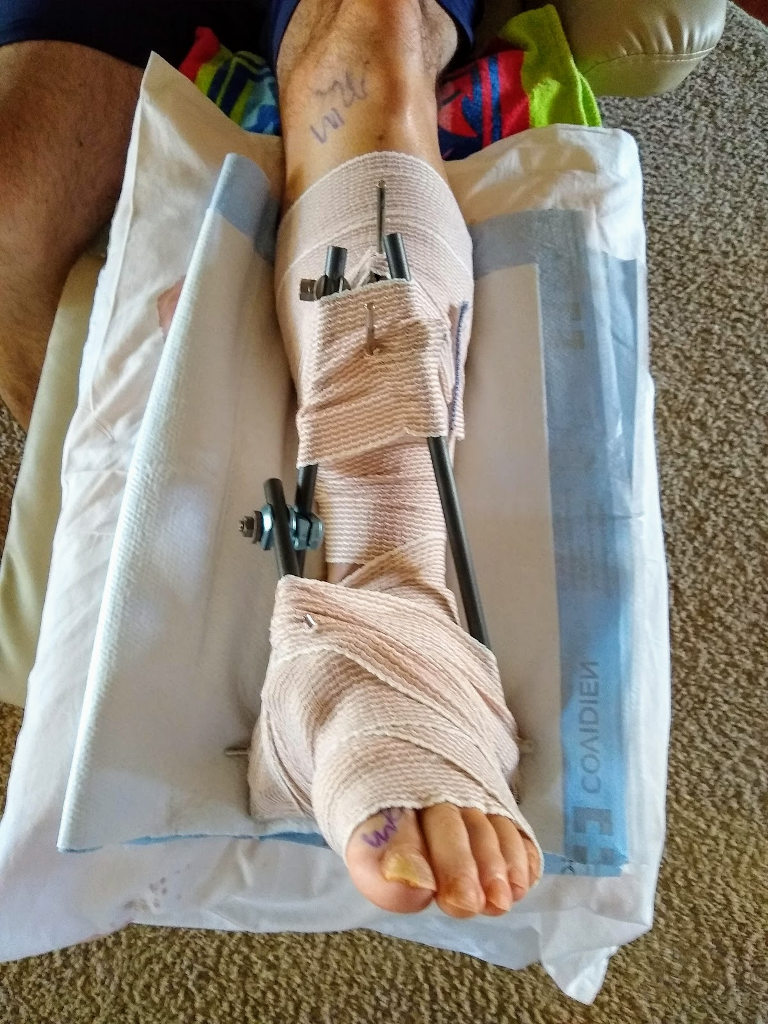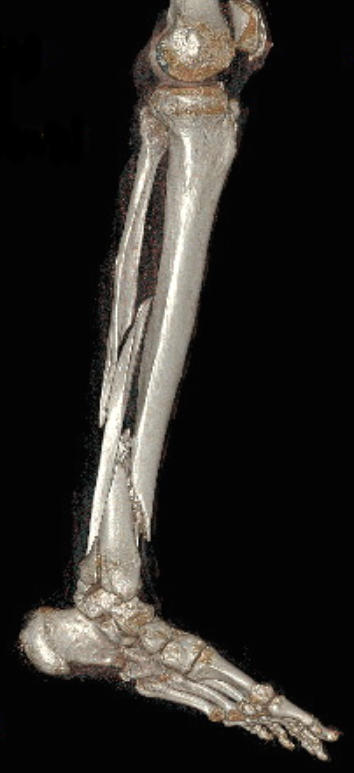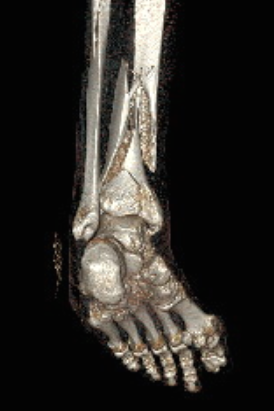On Saturday, Nov 2, 2019, while riding from Paso Robles to San Diego in preparation for a Baja trip the following weekend, I fell off my Triumph Tiger 800xc. Given some folks have contacted me to learn the details, extent of injuries, and outcome, I thought it might be useful to document those details here.
The fall occurred at the intersection of CA 154 & 246 near Solvang, CA while traveling southbound on CA 154. That intersection is a traffic circle. I stopped to yield to cars already in the circle, when clear, entered the circle, then proceeded around the circle. About half way around to the exit that continues CA 154, the motorcycle's rear wheel began to slide to the right. It continued rapidly around resulting in a low side fall onto the side of the motorcycle. According to the GPS that was attached to the bike, and recording at the time, I was traveling less than 24 mph. I estimate that from the time the wheel began to slide until I was laying on the ground was less than two seconds.
The lowside was very rapid with little time to recover. It felt as if the surface was unusually slick—although others at the scene did not find any fluids on the pavement. Debbie did comment that the pavement had limited grip as she walked on it in sneakers.
My gear did its job. I was well protected as I fell to the pavement, stopping after a brief slide. However, my left leg was injured by a combination of rotation and impact from the motorcycle landing on the lower left leg. My "only" injury was a broken tibia and fibula bones in the leg.
The tibia is the larger bone in the lower leg. Mine was broken both from rotation and impact resulting in a curving fracture overlaid with a 'Z' break. I later learned, the tibia injury is called a "pilon"1 fracture.
Cars immediately behind me and in front stopped and came to my aid. Additionally Debbie was following in our car. Everyone helped to right the Tiger and move it off the road. The bike experienced almost no damage with just a few scratches.
Laying on the street, it was immediately clear to me I had broken the leg as I could not control the position of my left foot and could feel the disconnected bone in the leg. However, surveying the remainder of my body I found no other injuries. I felt along my neck and arms finding no injuries. Further, there was no blood from the leg indicating the breakage was internal.
Emergency services was called and arrived within less than five minutes. By the time they arrived I had already removed my helmet, gloves, and jacket. My helmet did not have a scratch confirming my memory that my head never touched the ground. EMTs worked with me to remove my boots and pants without cutting (a bit of pain with that!). They used a blanket style splint around the leg and a clamshell stretcher to stabilize me. Loaded into the ambulance I left the scene as Debbie remained working with a AAA flatbed that loaded the Tiger and returned it to my garage in Paso.
Inside the ambulance the team offered some options for hospitals. I choose Santa Barbara Cottage Hospital as they host both a trauma center and have orthopedic surgery specialties. My EMT called Debbie to let her know where to go when she was able.
I stayed in the hospital three days. After inspection by the orthopedic surgeon he decided on a multi-stage approach with stabilization as the first step. On Sunday he operated on my leg to re-position the bones and install an external fixation device. His approach was to first stabilize the leg and provide time for swelling to be reduced. After some recovery over one to two weeks, his intent was to return and install a more permanent solution.

On Monday, Nov 4th I was discharged and returned home to Paso in the back seat of my truck with Debbie.
Below are two images from the computerized tomography (CT) scan conducted after a temporary cast was installed. Information from the scan caused the surgeon to determine that leaving me with just the cast would not be adequate leading to an external fixation surgery.
CT Scan close-up tibia and fibula break. The fibula (i.e., small bone) break is the easier to resolve with a single diagonal break to repair.

CT Scan close-up of tibia break. I'm told this is a complex problem to resolve. The bone is broken in a 'Z' shape and there is a spiral fracture curving down to the end of the bone where it is part of the ankle joint. Both are visible in this CT image.

After a couple of days resting in Paso, I began exploring treatment alternatives leading to a full recovery. On review of options, and some consultations, I choose to return to San Diego where I have received the majority of my medical care over the past ten years.
The Sharp Medical Group has been my primary provider and has been the home of my primary care physician for many years. They have an orthopedic center with same day services staffed with a orthopedic surgeon. So, on Nov 11th I travelled back to San Diego for an office visit scheduled for Tuesday Nov 12th.
At Sharp they reviewed the case and immediately assigned me out of the center to a orthopedic trauma surgeon located a few blocks away. He saw me within hours and proposed an additional surgery to restructure the external fixation moving the attachment rods into my leg bone a bit further up towards the knee, which will provide him better access to the injury site. With such, the site of my current upper pins would heal and offer additional bone structure for him to anchor screws. His overall plan is to continue use of the fixator to allow time for swelling to be reduced. Then, when my ankle is less swollen, undergo a more definitive surgery to repair the break.
This second surgery to adjust the fixator was scheduled for Friday Nov 15th. I returned to Paso for a few days to rest.
On Thursday Nov 14th I returned to San Diego and entered Sharp Memorial Hospital early on the 15th for surgery. The procedure went very well and I was discharged by Friday afternoon around 2 pm. After a brief visit to my San Diego office, Debbie and I traveled north, with an overnight stop along the way, finishing the trip home on Saturday Nov 16th.

As of Nov 18th, I'm at home recovering with a few pounds of metal holding my left leg together as we await the swelling to diminish. It is expected that one to two weeks will be required before I'll be ready for the next surgery that will be a more complete solution. I can get around the house on crutches but more lengthy travel is a challenge.
Two days after the fixator surgery, I reached the point where the wraps can be removed and I can take a shower. Nice! While it is awkward operating on just one leg, I can take daily showers without restriction (in fact encouraged as keeping the fixator pins very clean is critical to avoiding bone infection). Sleeping can be a challenge as only one position is available—flat on my back with my leg on a pillow. But all considered, not too bad.
As I reflect on the crash and my gear, the one area for potential improvement will be boots that resist foot rotation and impacts to the leg. With my "sitting around" time, I've been searching for a good solution. The best option that I currently own are the SIDI Crossfire 2 boots, which I use for all mostly off-road trips. These have relatively good crush and twist protection compared to the Combat Lites I was wearing for the accident. SIDI now offers an improved version—the Crossfire 3 that have even better twist resistance.
1. A pilon fracture, is a fracture of the distal (bone end furthest from the body) of the tibia, involving its articular surface at the ankle joint. Pilon fractures are caused by rotational or axial forces, mostly as a result of falls from a height or motor vehicle accidents.↵

